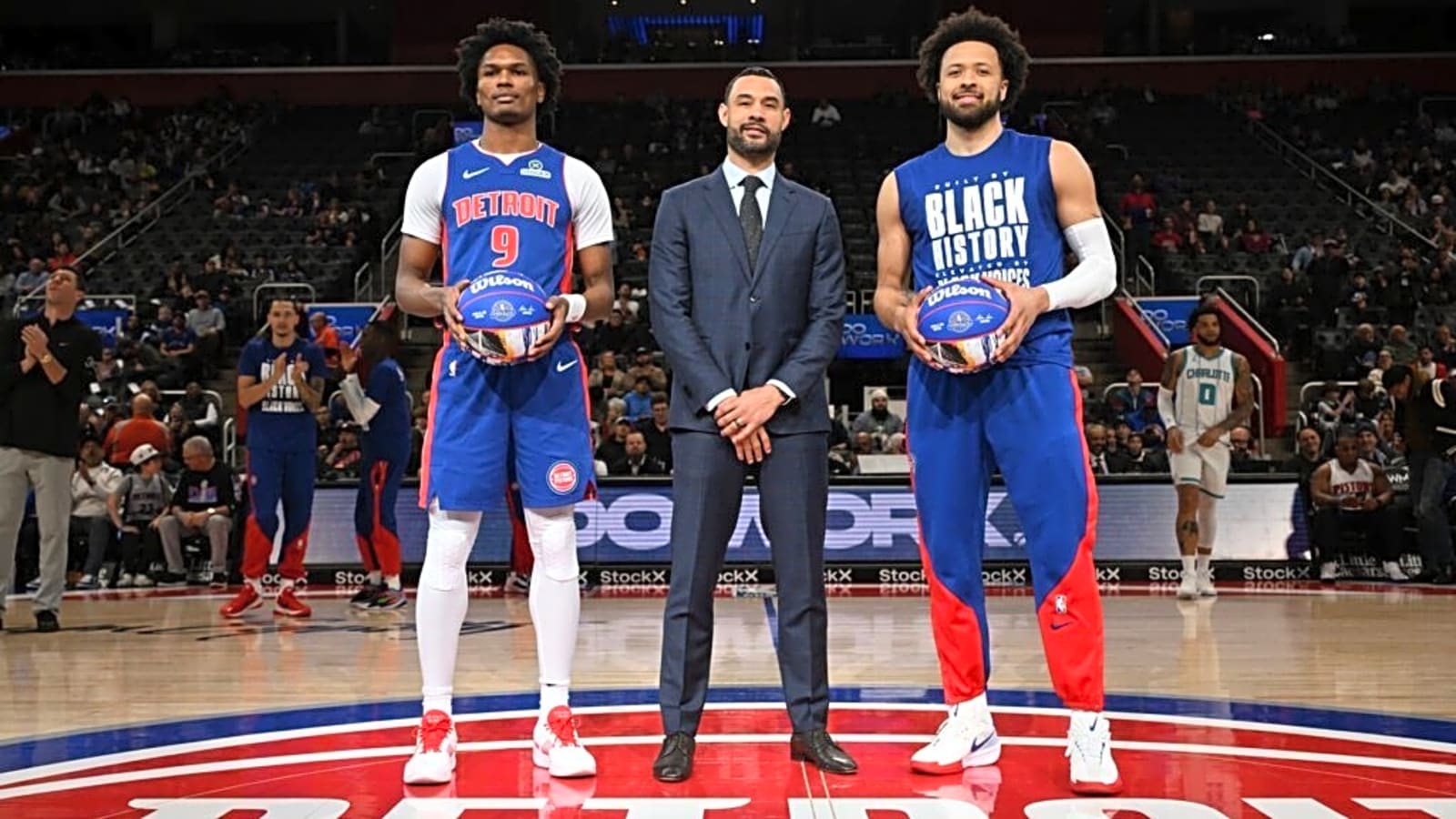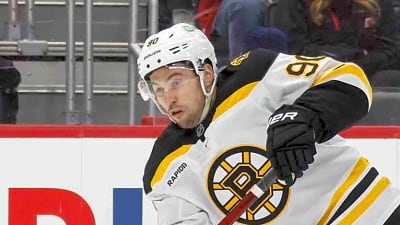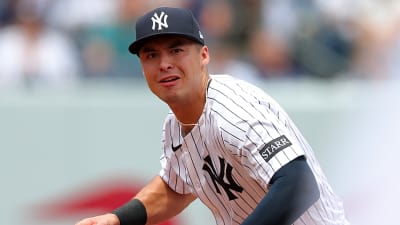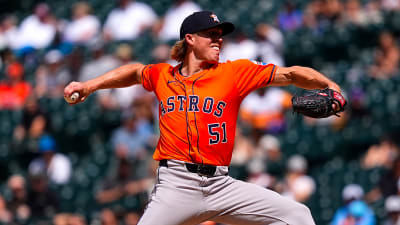
Success starts with stability—something the Detroit Pistons had lacked for far too long. In the 2024 offseason, owner Tom Gores made it the franchise’s top priority, moving on from Monty Williams and Troy Weaver and bringing in J.B. Bickerstaff and Trajan Langdon to chart a new course. The results came fast. The Pistons improved by 30 wins and even notched two playoff victories before falling to the Knicks, signaling a franchise that was finally on the rise.
Langdon chose refinement over a complete rebuild, allowing the previous core to flourish under new leadership. With something to prove himself, Bickerstaff brought structure and accountability to a young group needing both. Cade Cunningham embraced his team leader role, while Jaden Ivey and Jalen Duren thrived in defined roles. With a renewed sense of purpose and a gritty, unselfish identity, Pistons basketball felt like Detroit again.
Pistons Basketball Culture Shift: Grading Coach, GM, Owner, Fans
The Mind Behind the Pistons’ Basketball Revival: Trajan Langdon
Trajan Langdon arrived in Detroit with league-wide respect and wasted no time justifying the hype. After five seasons as GM of the New Orleans Pelicans, he took over as the Pistons’ President of Basketball Operations in 2024, tasked with reshaping a fractured franchise. Langdon went straight to work, trading for veteran shooter Tim Hardaway Jr. and signing Tobias Harris and Malik Beasley in free agency to bring scoring and leadership to a young, evolving roster. He also drafted Ron Holland and pulled off a shrewd draft-day deal to land Bobi Klintman—moves that signaled both short-term intent and long-term vision.
When Ivey went down midseason, Langdon didn’t blink. He boldly inserted the Pistons into the Jimmy Butler trade, landing Dennis Schröder to stabilize the backcourt. Whether major or minor, Langdon’s every move nudged Detroit closer to respectability. His efforts earned him a spot as a finalist for NBA Executive of the Year, finishing behind Sam Presti and Koby Altman. But the message was clear: under Langdon, the Pistons are no longer being ignored.
Grade: A
Head Coach: J.B. Bickerstaff
Ask around the league, and you’ll hear a common sentiment: J.B. Bickerstaff didn’t deserve to be let go in Cleveland. After turning the Cavaliers from a 22-win team into a steady playoff presence, it was only a matter of time before another opportunity came. That chance arrived in July 2024, when the Pistons named him the head coach. Inheriting a team fresh off a 68-loss season, Bickerstaff was tasked with restoring direction and belief.
He delivered in every aspect. Bickerstaff implemented structure and empowered the young core to grow. He moved Isaiah Stewart back to center, gave Ivey a firm role as a starting guard, and expanded Duren’s offensive responsibilities. Holland was encouraged to learn through mistakes, while Marcus Sasser stayed ready and delivered. The Pistons played with grit and cohesion, and Bickerstaff earned a Coach of the Year finalist nod, falling just short to Kenny Atkinson. More importantly, he laid the foundation for sustained success in Detroit.
Grade: A
Govenor: Tom Gores
For years, Tom Gores was the face of frustration in Detroit. The Pistons’ inconsistency, poor roster construction, and revolving door of coaches often traced back to the top. But in 2024, Gores finally made the tough decisions that signaled a new era. He moved on from Williams and Weaver, two high-profile hires who failed to deliver results, and took a more hands-off but intentional approach to rebuilding the franchise’s foundation.
By bringing in Langdon and Bickerstaff, Gores prioritized stability and culture over flash. More importantly, he empowered them to make basketball decisions without interference. The results spoke for themselves—a 30-win improvement, playoff success, and renewed pride in Pistons basketball. For the first time in a long time, Gores is being praised not for what he promised but for what he finally delivered: a functional, forward-moving franchise.
Grade: A-
Fans
Through years of losing seasons, coaching changes, and front office turnover, Pistons fans never wavered—they endured. From half-empty arenas to online frustration, the Pistons faithful stuck with a team that gave them little in return. But in 2024–25, that loyalty finally started to feel rewarded. With a more formidable, connected roster on the floor and a clear identity taking shape, fans didn’t just show up—they showed out.
Little Caesars Arena began to feel alive again. Chants were louder, jerseys were newer, and the energy in Detroit basketball was unmistakable. The city that once defined grit and grind in the 2000s saw flickers of that spirit return. For the fans, this season wasn’t just about winning more games—it was about hope. And now, for the first time in a long time, it feels like that hope is rooted in something real.
Grade: A
The Last Word
The 2024–25 season marked a turning point for the Detroit Pistons—a franchise that, for years, had been searching for direction, identity, and hope. With Tom Gores finally making the right leadership moves, Trajan Langdon reshaping the roster with vision and precision, and J.B. Bickerstaff instilling structure and belief, the Pistons transformed from a league afterthought into a purposeful team. Young players developed, veterans contributed, and most importantly, the fans- long-suffering but never silent—had something to believe in again. This wasn’t just a step forward; it was the foundation of a new era in Pistons basketball.
More must-reads:
- Three-time MVP won't sign extension with Nuggets this offseason
- Former first-round pick gets traded for second time in two days
- The 'Active non-US born NBA points leaders' quiz
Breaking News
Trending News
Customize Your Newsletter
 +
+
Get the latest news and rumors, customized to your favorite sports and teams. Emailed daily. Always free!








